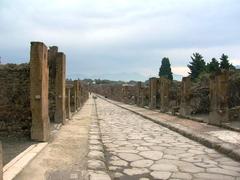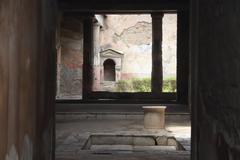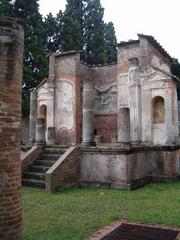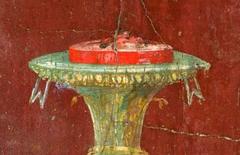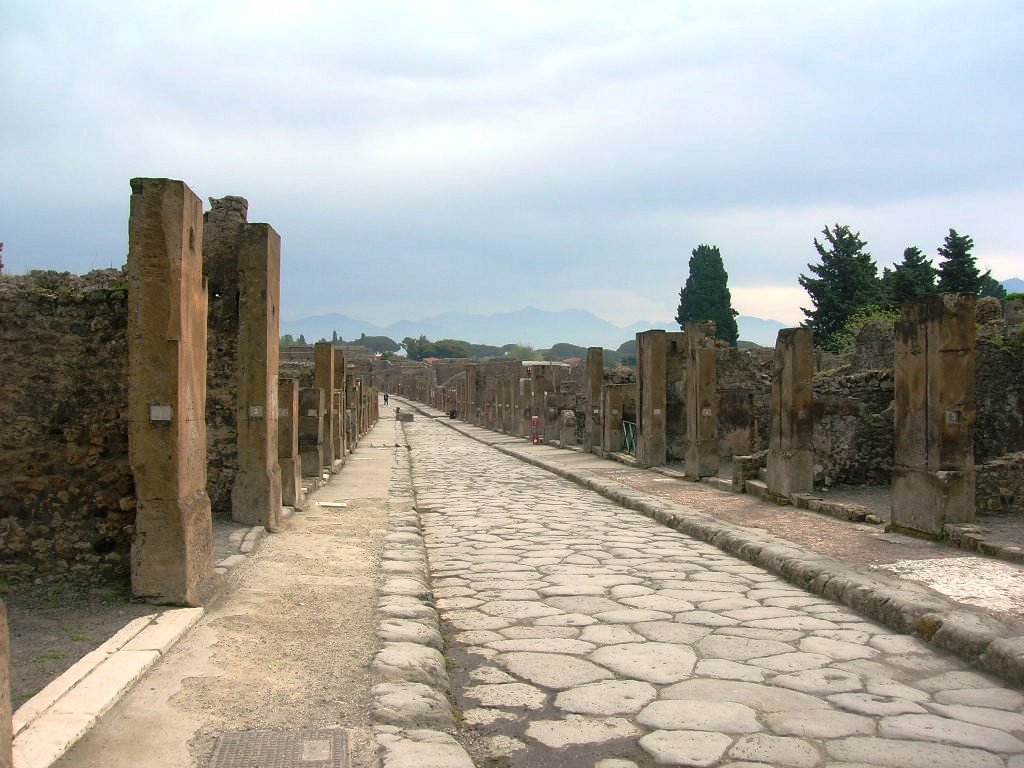
Villa dei Misteri Visiting Hours and Tickets: Unveiling the Mysteries
Date: 18/07/2024
Introduction
Nestled in the shadow of Mount Vesuvius, the Villa dei Misteri offers an unparalleled glimpse into the opulent and enigmatic world of ancient Roman society. This villa, located in Pompeii, Italy, is a testament to Roman luxury and artistic achievement before the catastrophic eruption of 79 AD. The Villa dei Misteri is renowned for its well-preserved Dionysiac frescoes, which depict initiation rites into the cult of Dionysus. These vibrant masterpieces provide invaluable insights into the religious practices, social customs, and artistic achievements of the Roman world. This article will delve into the rich historical background, cultural significance, and practical visitor information for this captivating site, ensuring that both history enthusiasts and curious travelers can fully appreciate the wonders of the Villa dei Misteri. For more information about visiting hours and tickets, you can refer to the official Pompeii Archaeological Park website.
Table of Contents
- Introduction
- Historical Background and Development of the Villa dei Misteri
- Exploring the Dionysiac Frescoes
- Visitor Experience and Practical Information
- Conclusion
Historical Background and Development of the Villa dei Misteri
Early History and Construction
The Villa dei Misteri, set against the dramatic backdrop of Mount Vesuvius, serves as a testament to Roman luxury before the catastrophic eruption of 79 AD. While the exact date of construction remains uncertain, archaeological evidence suggests that the villa originated in the late 2nd century BC as a residence for a wealthy Roman Republic family.
Expansion and Transformation
In the 1st century BC, the villa underwent significant expansion and transformation. This period saw the addition of various structures, including a bath complex and agricultural areas. The most notable addition was the large frescoed room known as the triclinium.
Exploring the Dionysiac Frescoes
The Setting - A Grand Triclinium
The frescoes adorn the walls of what was likely the triclinium, the formal dining room, of the villa. This grand room speaks to the wealth and status of the villa’s inhabitants. The choice of subject matter, the Dionysiac mysteries, further emphasizes this point, as these rites were often associated with the elite.
The Narrative - A Journey of Initiation
The frescoes are not merely decorative; they tell a story. Scholars generally agree that they depict the initiation rites into the cult of Dionysus, a mystery cult promising rebirth and salvation. The narrative unfolds across the walls, drawing the viewer into its enigmatic embrace.
Key Scenes and Interpretations
- The Reading of the Ritual: The fresco cycle begins with a scene of a young woman, possibly a bride about to be initiated, reading from a scroll. This act signifies the beginning of the initiation process, a moment of preparation and anticipation.
- The Purification Ritual: Next, we see a scene of purification, with a woman pouring water over another. This act symbolizes the cleansing of the initiate, both physically and spiritually, in preparation for the divine encounter.
- The Flagellation: A more unsettling scene follows, depicting a winged figure, possibly a priestess, whipping a young woman. This act, often interpreted as symbolic flagellation, represents the trials and tribulations the initiate must endure to achieve spiritual enlightenment.
- The Unveiling of the Phallus: One of the most iconic and debated scenes in the cycle is the unveiling of the phallus. This act, central to the Dionysiac mysteries, symbolizes fertility, abundance, and the generative power of the god.
- The Ecstasy of the Dance: The frescoes culminate in a scene of ecstatic dancing, with figures swirling in a frenzy of movement. This act represents the culmination of the initiation process, the moment of union with the divine, characterized by joy, liberation, and spiritual ecstasy.
The Style - Realism and Emotion
The frescoes are executed in the “Second Style” of Roman wall painting, characterized by its illusionistic qualities. The artists skillfully used perspective and shading to create a sense of depth and realism, drawing the viewer into the scene. The figures are depicted with remarkable naturalism, their gestures and expressions conveying a range of emotions, from fear and apprehension to joy and ecstasy.
The Significance - A Window into Antiquity
The Dionysiac frescoes of Villa dei Misteri are more than just beautiful works of art; they are invaluable historical documents. They provide us with a rare and intimate glimpse into the religious practices, social customs, and artistic achievements of the Roman world. They offer a window into a world both familiar and strange, inviting us to contemplate the enduring power of ritual, belief, and the human search for meaning.
Visitor Experience and Practical Information
Planning Your Visit
Best Time to Visit:
- Spring (April-May) and Autumn (September-October): These shoulder seasons offer pleasant weather, fewer crowds, and blooming gardens.
- Summer (June-August): While crowded, summer offers extended opening hours and the chance to enjoy the villa’s gardens in full bloom. However, be prepared for heat and potential queues.
- Winter (November-March): The villa is less crowded, but some areas might have limited access due to weather conditions.
Opening Hours:
- Tuesday to Sunday: 9:00 AM to 7:00 PM (last admission 6:00 PM)
- Closed on Mondays, January 1st, May 1st, and December 25th
Tickets:
- Full price: €12
- Reduced price: €2 for EU citizens aged 18-25
- Free admission: For everyone on the first Sunday of each month
Purchasing Tickets:
- Online: Tickets can be purchased in advance through the official Pompeii Archaeological Park website.
- On-site: Ticket offices are available at the entrance of the Villa dei Misteri and Pompeii ruins.
Getting There
By Car:
- From Naples, take the A3 Napoli-Salerno highway and exit at Pompeii Scavi. Follow the signs to Villa dei Misteri.
- Parking is available near the entrance.
By Train:
- Take the Circumvesuviana train line from Naples to Pompeii Scavi - Villa dei Misteri station. The villa is a short walk from the station.
By Bus:
- SITA buses connect Pompeii to Naples and Sorrento. Get off at the Pompeii Villa dei Misteri stop.
Exploring the Villa
Guided Tours:
- Guided tours are available in various languages and can be booked online or at the entrance.
- A guided tour enhances the experience by providing historical context and insights into the villa’s art and architecture.
Audio Guides:
- Audio guides are available for rent at the entrance in multiple languages.
- They offer a flexible and informative way to explore the villa at your own pace.
Duration of Visit:
- Allow at least 1-2 hours to fully appreciate the villa and its frescoes.
What to See:
- Initiation Chamber: The highlight of the villa, featuring the enigmatic frescoes depicting the Dionysian mysteries.
- Atrium: The central courtyard, surrounded by elegant columns and offering glimpses of the villa’s layout.
- Triclinium: The dining room, adorned with frescoes depicting mythological scenes and landscapes.
- Peristyle: The colonnaded garden, offering a serene escape and views of the surrounding countryside.
- Other Rooms: Explore the various rooms, each decorated with unique frescoes and mosaics, showcasing the villa’s opulence.
Tips for a Memorable Visit
- Arrive early or late in the day: To avoid the midday crowds, especially during peak season.
- Wear comfortable shoes: As you’ll be doing a fair amount of walking on uneven surfaces.
- Bring water and snacks: As there are limited refreshments available on-site.
- Allow ample time: To fully immerse yourself in the villa’s history and art.
- Take advantage of guided tours or audio guides: To enhance your understanding and appreciation of the site.
- Respect the historical significance: Refrain from touching the frescoes and mosaics.
- Capture the beauty: Photography is allowed without flash, so capture memories of this remarkable site.
Combining Your Visit
- Pompeii Archaeological Park: The Villa dei Misteri is located near the Pompeii ruins, making it easy to combine both sites in one visit.
- National Archaeological Museum of Naples: Many artifacts excavated from Pompeii and the Villa dei Misteri are housed here, providing further context and insights. (National Archaeological Museum of Naples)
- Mount Vesuvius: Hike to the summit of the volcano that buried Pompeii and Herculaneum, offering panoramic views of the Bay of Naples.
Accessibility
- The Villa dei Misteri is partially accessible to visitors with disabilities.
- Wheelchairs are available for use free of charge.
- Accessible restrooms are located on-site.
Nearby Amenities
- Restaurants: Several restaurants and cafes are located near the entrance of the Villa dei Misteri and Pompeii ruins, offering traditional Italian cuisine and refreshments.
- Accommodation: A range of accommodation options, from budget-friendly guesthouses to luxury hotels, are available in Pompeii and nearby towns.
- Souvenir Shops: Numerous souvenir shops line the streets leading to the Villa dei Misteri and Pompeii ruins, offering a variety of souvenirs, including replicas of artifacts, postcards, and local crafts.
Frequently Asked Questions (FAQ)
- What are the Villa dei Misteri opening hours? The Villa dei Misteri is open from 9:00 AM to 7:00 PM, Tuesday to Sunday, with the last admission at 6:00 PM. It is closed on Mondays, January 1st, May 1st, and December 25th.
- How much are tickets to the Villa dei Misteri? Full-price tickets are €12, reduced-price tickets for EU citizens aged 18-25 are €2, and admission is free for everyone on the first Sunday of each month.
- How can I purchase tickets? Tickets can be purchased online at the official Pompeii Archaeological Park website or on-site at the entrance of the Villa dei Misteri.
- Is the Villa dei Misteri accessible to visitors with disabilities? The villa is partially accessible, and wheelchairs are available for use free of charge. Accessible restrooms are also located on-site.
Conclusion
The Villa dei Misteri stands as a remarkable testament to the cultural and artistic heritage of ancient Rome. From its early construction in the late 2nd century BC to its expansion and transformation in the 1st century BC, the villa encapsulates the grandeur and opulence of Roman society. The Dionysiac frescoes, with their intricate narratives and emotional realism, offer a unique window into the religious and social practices of the time. Visiting the Villa dei Misteri is not just a journey through history but an immersive experience that connects us to the timeless human quest for meaning and spiritual enlightenment. Whether you are exploring the villa’s frescoed rooms, walking through its serene gardens, or learning about its historical significance, a visit to the Villa dei Misteri promises to be a memorable and enriching experience. For the latest updates and more information, you can download the mobile app Audiala or follow related posts on social media.
References
- Discover the Villa dei Misteri - History, Visiting Hours, and Tickets (official Pompeii Archaeological Park website)
- National Archaeological Museum of Naples (National Archaeological Museum of Naples)
